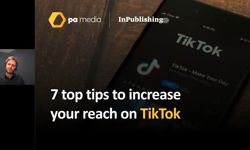Q: As a publisher, why should I think about creating a subscription program?
A: In a digital publishing context, it's vital to have multiple revenue streams. Your users will automatically segment themselves into different categories. If they’re coming in from social media, you might need to present a heavier ad load compared to someone coming in through your homepage, who’s likely a more loyal and engaged user and more receptive to a subscription offer. Understanding the different types of users and tailoring the right business model to them means you can maximise your revenue opportunities.
Q: How do you avoid the problem of over-personalisation?
A: This is where the “test and refine” strategy comes into play. If you think of personalisation as a spectrum, on one side there are very simple strategies like showing users trending content – which really isn’t a personalisation strategy at all. On the other end of the spectrum is a highly personalized one-to-one offer. Success lies somewhere in the middle. If you try to slice your audience into too many segments, they’ll be too small to test effectively. My recommendation is to start with between 10 and 20 segments and test and refine from there.
Q: Can personalisation help me figure out which types of subscription products will be most attractive to my audiences?
A: This is really the red thread through this whole conversation. By first starting to assemble data, then segmenting your users by a set of factors – like number of pageviews, how they entered your site, did they download your mobile app, do they visit only on weekends – you can figure out which business model they’ll respond to. Some of your users might be best suited to advertising, but they’re using ad blockers. You could ask them instead to fill out a survey or watch a 30-second sponsor video to unlock your site for the day. One size really doesn’t fit all, and the data can help you figure out which offer works best for each user.
Q: How do you execute on personalisation given the problem of ad blockers?
A: Anywhere from 20-40% of your users are using ad blockers. Your first reaction might be to say: “if they’re blocking ads, then I’m not going to show them my content.” I don’t think that’s necessarily the right response. A better approach is to accept that a segment of your users don’t welcome a user experience that includes ads and offer them alternatives – ask them to complete a survey to unlock your site for a day or offer them an ad-free subscription model. Having these different user experience flavours helps you appeal to a broader set of users.
Q: I have a valuable video archive. Can personalisation help me surface my video content?
A: One of the five tips we covered in the webinar was: make sure you're assembling your data. Video monetises better than any other medium, but to take advantage of your video archive you need to mark up your video content with metadata and transcripts. Using a service like Cxense to automatically create this metadata means your videos are ready to be fed into your subscription campaigns and personalisation algorithms.
Personalisation is made up of a whole bunch of data on the content, the user, their behaviour and the form factor of the device they’re using. With a video personalisation strategy, you can use these signals to recommend a video based on the article they’re looking at, the video they just watched or the fact they’re watching on their iPhone.
Q: How hard is it to implement a personalisation strategy?
A: We've been talking about the “right content, right user, right time” concept for 10 years, but there have been some technical obstacles to using real-time data for personalisation. Now, technology like Cxense enables publishers to deploy automated, real-time personalisation with a relatively small effort and a high chance for good ROI.
When we work with publishers, we typically see one key person responsible for audience development or audience optimisation that acts as the quarterback for the personalisation effort. There’s also a relatively small effort required from the web development team to deploy the tags and scripts needed to collect data and action it across your sites and apps. And then it’s all about being creative about the testing and targeting of content and offers to your users.
Q: What are the different ways personalisation can deliver value?
A: It's all about making sure that the content, advertising and offers are targeted at the right profile, segment and persona to maximise their likelihood to engage. This is an engagement battle – users have many options when it comes to content sources, and they're receiving tons of ads and offers every day. The bar for users is being raised, and they’re getting used to receiving content that’s relevant for them – not only through social, but also through Netflix, Amazon and others. Great personalisation is subtle: the user isn’t necessarily aware of why the experience is great, it just feels right and makes them want to engage more with your brand.
Q: What should decision-makers think about before going down a personalisation path?
A: First, they should have a clear understanding of their business goals. Second, they should understand what they’ll measure to know if those goals are being met. You need to know what success looks like – what earns you more revenue, broader reach and a bigger user base. This type of reflection is really important at the beginning of your project, so the campaigns you deploy map to those outcomes.
A recording of the webinar can be viewed here.










